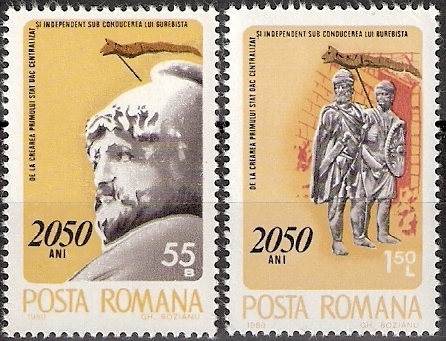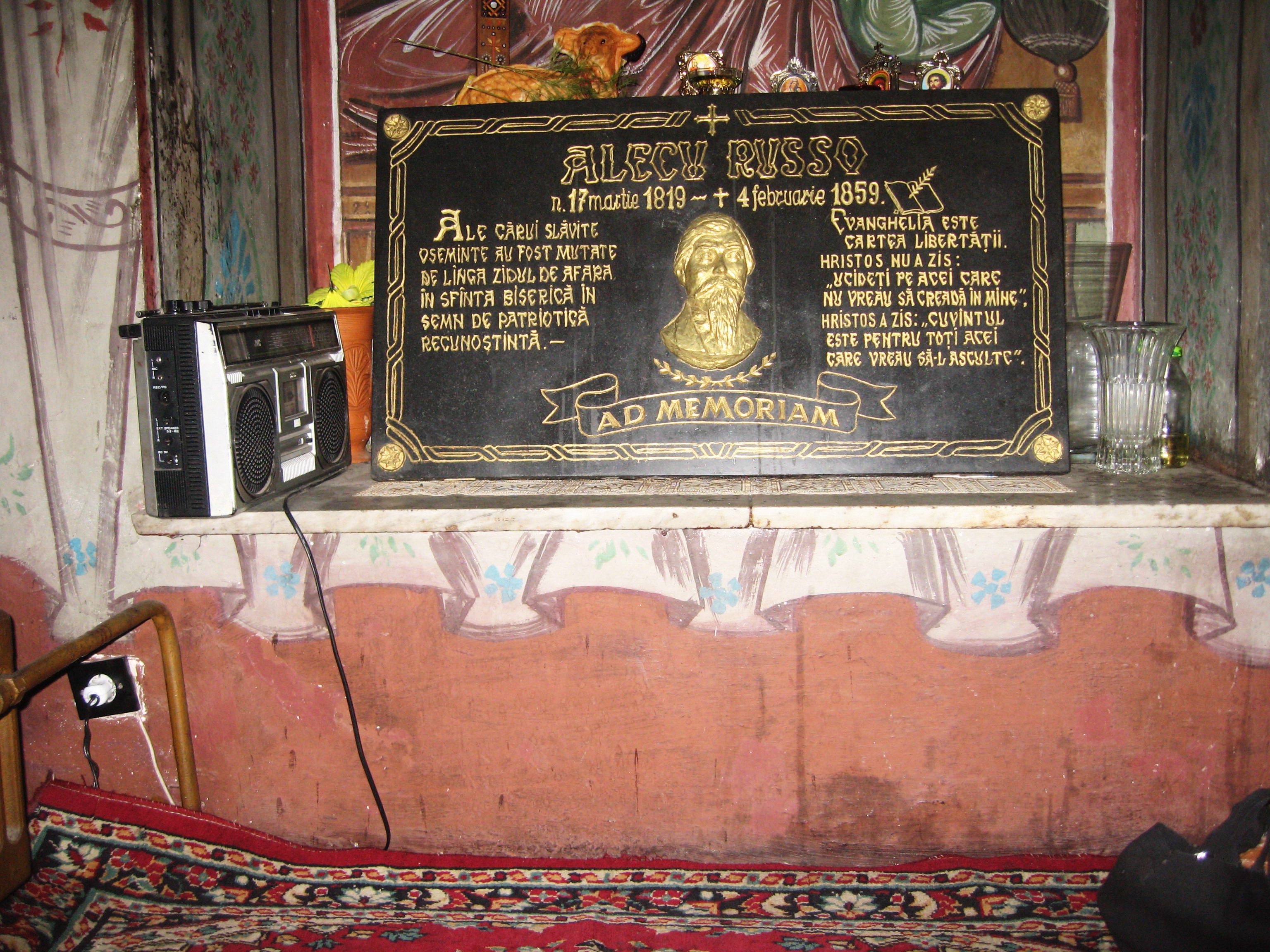|
Cîntarea României
Cîntarea României (literally "Song f praiseto Romania") was an annual national cultural festival in the Socialist Republic of Romania since 1976 intended to promote ideologically-approved artistic manifestations, featuring both professional and amateur artists from across the country.Dragoș Petrescu, "Communist legacies in the New Europe: history, ethnicity and the creation of a 'socialist' nation in Romania, 1945-1989", in ''Conflicted Memories: Europeanizing Contemporary Histories'', edited by Konrad H. Jarausch, Thomas Lindenberger, Berghahn Books, 2011, , p.48 Being part of Ceaușescu's policies to promote National Communism in Romania, the festival used folklore (especially folk music) and it had a role in shaping the national identity of the Romanians and the view of Romanian history. The festival gets its name from a 19th-century essay generally attributed to Alecu Russo Alecu Russo (17 March 1819 – 5 February 1859) was a Romanian writer, literary critic and publici ... [...More Info...] [...Related Items...] OR: [Wikipedia] [Google] [Baidu] |
Socialist Republic Of Romania
The Socialist Republic of Romania (, RSR) was a Marxism–Leninism, Marxist–Leninist One-party state, one-party socialist state that existed officially in Romania from 1947 to 1989 (see Revolutions of 1989). From 1947 to 1965, the state was known as the Romanian People's Republic (, RPR). The country was an Eastern Bloc state and a member of the Warsaw Pact with a dominant role for the Romanian Communist Party enshrined in :Template:RomanianConstitutions, its constitutions. Geographically, RSR was bordered by the Black Sea to the east, the Soviet Union (via the Ukrainian Soviet Socialist Republic, Ukrainian and Moldavian Soviet Socialist Republic, Moldavian SSRs) to the north and east, Hungarian People's Republic, Hungary and Socialist Federal Republic of Yugoslavia, Yugoslavia (via Socialist Republic of Serbia, SR Serbia) to the west, and People's Republic of Bulgaria, Bulgaria to the south. As World War II ended, Kingdom of Romania, Romania, a former Axis powers, Axis membe ... [...More Info...] [...Related Items...] OR: [Wikipedia] [Google] [Baidu] |
National Communism In Romania
National communism in Romania is a term referring to a form of nationalism promoted in the Socialist Republic of Romania between the early 1960s and 1989; the term itself was not used by the Communist regime. Having its origins in Gheorghe Gheorghiu-Dej's political emancipation from the Soviet Union, it was greatly developed by Nicolae Ceaușescu, who began in 1971, through his July Theses manifesto, a national cultural revolution. Part of the national mythology was Nicolae Ceaușescu's cult of personality and the idealization of Romanian history, known in Romanian historiography as protochronism. This nationalistic ideology was built upon a mixture of both Marxist–Leninist principles and doctrines of Romanian nationalism. The driving force behind the ideology of national communism was the belief that Romanians are an isolated "Latin island" in Eastern Europe who have endlessly and unanimously fought off external forces throughout two thousand years to achieve unity and in ... [...More Info...] [...Related Items...] OR: [Wikipedia] [Google] [Baidu] |
Folk Music
Folk music is a music genre that includes #Traditional folk music, traditional folk music and the Contemporary folk music, contemporary genre that evolved from the former during the 20th-century folk revival. Some types of folk music may be called world music. Traditional folk music has been defined in several ways: as music transmitted orally, music with unknown composers, music that is played on traditional instruments, music about cultural or national identity, music that changes between generations (folk process), music associated with a people's folklore, or music performed by Convention (norm), custom over a long period of time. It has been contrasted with popular music, commercial and art music, classical styles. The term originated in the 19th century, but folk music extends beyond that. Starting in the mid-20th century, a new form of popular folk music evolved from traditional folk music. This process and period is called the (second) folk revival and reached a zenith ... [...More Info...] [...Related Items...] OR: [Wikipedia] [Google] [Baidu] |
Alecu Russo
Alecu Russo (17 March 1819 – 5 February 1859) was a Romanian writer, literary critic and publicist. Russo is credited with having discovered one of the most elaborate forms of the Romanian national folk ballad '' Miorița''. He was also a contributor to the Iași periodical ''Zimbrul'', in which he published one of his best-known works, ''Studie Moldovană'' ("Moldovan Studies"), in 1851–1852. He also wrote ''Iașii și locuitorii lui în 1840'' ("Iași and its inhabitants in 1840"), a glimpse into Moldavian society during the ''Organic Statute'' administration, and two travel accounts (better described as folklore studies), ''Piatra Teiului'' and ''Stânca Corbului''. Russo is also notable for his ''Amintiri'' ("Recollections"), a memoir, and for the prose poem . Both these works appeared in 1855 in Vasile Alecsandri Vasile Alecsandri (; 21 July 182122 August 1890) was a Romanian patriot, poet, dramatist, politician and diplomat. He was one of the key figures durin ... [...More Info...] [...Related Items...] OR: [Wikipedia] [Google] [Baidu] |
Festivals In Romania
This is a list of festivals in Romania. By type Music Jazz, Rock, Electronic Classical * George Enescu Festival * Toamna Muzicală Clujeană Others * Beach, Please! Festival * Electric Castle * EUROPAfest – International festival of jazz, blues, pop and classical music * Rockstadt Extreme Fest – Râșnov Theatre * Avram Goldfaden Festival – Iași * FITS – International Theater Festival, Sibiu Cinema * Comedy Cluj, International Comedy Film Festival, Cluj-Napoca * F-Sides – Feminist Film Festival, Bucharest * Gay Film Nights – LGBT Film Festival, Cluj-Napoca * Transilvania International Film Festival, Cluj-Napoca Others * Sighișoara Medieval Festival – Cultural (Medieval revival) See also *List of music festivals * List of festivals in Europe References External links {{Music festivals 5 Best Music Festivals in Romania To Fill Your Summer With Culture of Romania Festivals Romania Romania is a country located at the crossroads of ... [...More Info...] [...Related Items...] OR: [Wikipedia] [Google] [Baidu] |
Culture Of Romania
The culture of Romania is an umbrella term used to encapsulate the ideas, customs and social behaviours of the people of Romania that developed due to the country's distinct geopolitical history and evolution. It is theorized that Romanians and related peoples (Aromanians, Megleno-Romanians, and Istro-Romanians) were formed through the admixture of the descendants of Roman colonists and the indigenous Dacian people who were subsequently Romanization (cultural), Romanized. Background Romania's history has been full of rebounds: the culturally productive epochs were those of stability when the people proved quite an impressive resourcefulness in the making up for less propitious periods and were able to rejoin the mainstream of Culture of Europe, European culture. This stands true for the years after the Phanariotes, Phanariote-Ottoman Empire, Ottoman period, at the beginning of the 19th century, when Romanians had a historical context and Romania started to become westerniz ... [...More Info...] [...Related Items...] OR: [Wikipedia] [Google] [Baidu] |
Romanian Nationalism
Romanian nationalism is a form of nationalism that asserts that Romanians are a nation and promotes the identity and cultural unity of Romanians. Its extremist variation is Romanian ultranationalism. History Antecedents The predecessors of the modern Romanian state were the principalities of Wallachia and Moldavia, which for most of their existence were vassals of the Ottoman Empire. One of the earliest proponents of Romanian nationalism was the List of monarchs of Moldavia, Moldavian prince Iacob Heraclid (ruled 1561-1563), who declared that the Romanians had Roman people, Roman ancestry and made failed attempts to unite Moldavia, Wallachia, and Transylvania- the three principal regions inhabited by Romanians. Later the Wallachian prince Michael the Brave was able to, for a short time in 1600, unite the three regions, marking the first time this had ever been done under a single ruler. For this he is still today regarded as a symbol of Romanian unity. In Transylvania, then ... [...More Info...] [...Related Items...] OR: [Wikipedia] [Google] [Baidu] |



